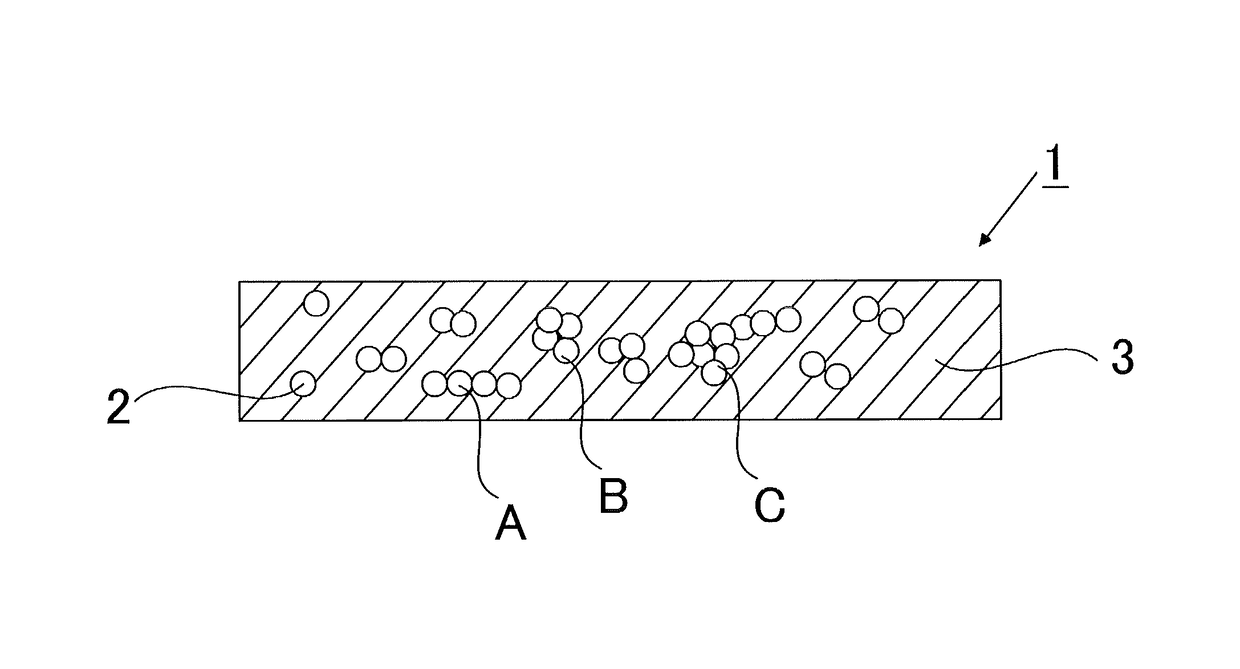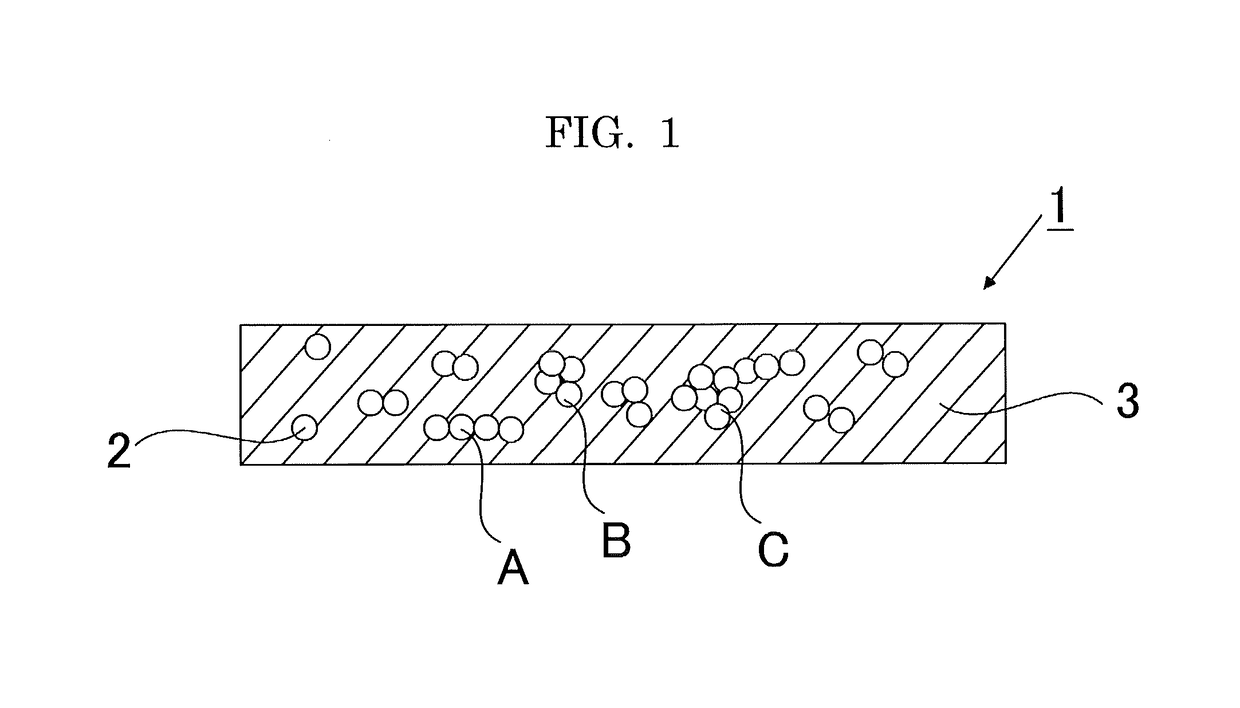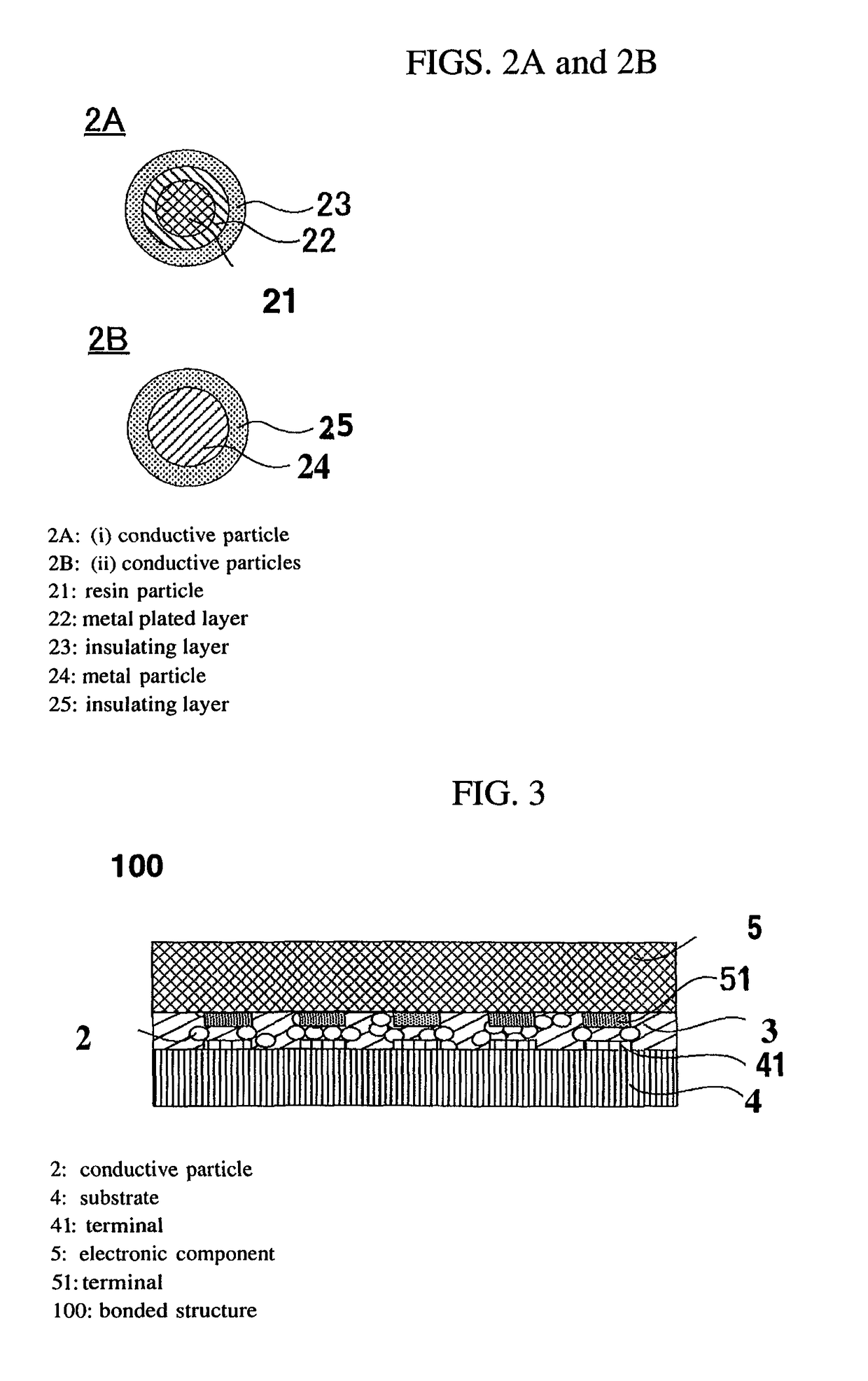Anisotropic conductive film, anisotropic conductive film production method, connecting method, and bonded structure
a technology of anisotropic conductive film and anisotropic conductive film, which is applied in the direction of printed circuit aspects, transportation and packaging, and association of printed circuit non-printed electric components, etc., can solve the problems of insufficient insulation resistance between adjacent electrodes (terminals), low particle capture rate, and insufficient insulation resistance between adjacent electrodes in a substrate or electronic component. achieve the effect of enhancing conduction resistan
- Summary
- Abstract
- Description
- Claims
- Application Information
AI Technical Summary
Benefits of technology
Problems solved by technology
Method used
Image
Examples
production example 1
[0132]To a solution, in which a blending ratio of divinyl benzene, styrene, and butyl methacrylate was adjusted, benzoyl peroxide was added as a polymerization initiator, and the resultant was homogeneously stirred at high speed with heating to proceed to a polymerization reaction, to thereby obtain a particle dispersion liquid. The particle dispersion liquid was filtered, followed by vacuum dried, to thereby obtain a block product that was an aggregated product of the particles. Then, the block product was pulverized, to thereby obtain crosslinked polystyrene particles having the average particle diameter of 3 μm.
example 1
—Production of Conductive Particles 1—
[0164]Resin particles, to each of which a metal plated layer was provided, were obtained in the same manner as in Comparative Example 2, provided that the concentration of P in the Ni—P (nickel-phosphorus) plating was changed to the concentration of P depicted in Table 1-1.
[0165]Subsequently, the resin particles, to each of which the metal plated layer had been provided, were covered with an insulating layer in accordance with the method described in the paragraphs [0013] to [0014] in JP-S No. 04-362104. Moreover, whether or not each of the resin particles each provided with the metal plated layer were covered with the insulating layer was confirmed by observing the particles under the metallurgical microscope
[0166]Anisotropic Conductive Film 3 and Bonded Structure 3 were obtained in the same manner as in Comparative Example 1, provided that the conductive particles were replaced with Conductive Particles 1.
[0167]Anisotropic Conductive Film 3 an...
examples 2 and 3
[0168]Anisotropic Conductive Films 4 to 5, and Bonded Structures 4 to 5 were obtained in the same manner as in Example 1, provided that, in the production of the conductive particles, the concentration of P in the Ni—P plating was changed to the concentration of P depicted in Table 1-1.
[0169]Note that, the average thickness of the plated layer was 100 nm in both Examples 2 and 3. Moreover, whether or not each of the resin particles each provided with the metal plated layer were covered with the insulating layer was confirmed by observing the particles under the metallurgical microscope Anisotropic Conductive Films 4 to 5 and Bonded Structures 4 to 5 as obtained were subjected to the evaluations in the same manner as in Comparative Example 1. The results are presented in Table 1-1.
PUM
| Property | Measurement | Unit |
|---|---|---|
| particle diameter | aaaaa | aaaaa |
| particle diameter | aaaaa | aaaaa |
| particle diameter | aaaaa | aaaaa |
Abstract
Description
Claims
Application Information
 Login to View More
Login to View More - R&D
- Intellectual Property
- Life Sciences
- Materials
- Tech Scout
- Unparalleled Data Quality
- Higher Quality Content
- 60% Fewer Hallucinations
Browse by: Latest US Patents, China's latest patents, Technical Efficacy Thesaurus, Application Domain, Technology Topic, Popular Technical Reports.
© 2025 PatSnap. All rights reserved.Legal|Privacy policy|Modern Slavery Act Transparency Statement|Sitemap|About US| Contact US: help@patsnap.com



